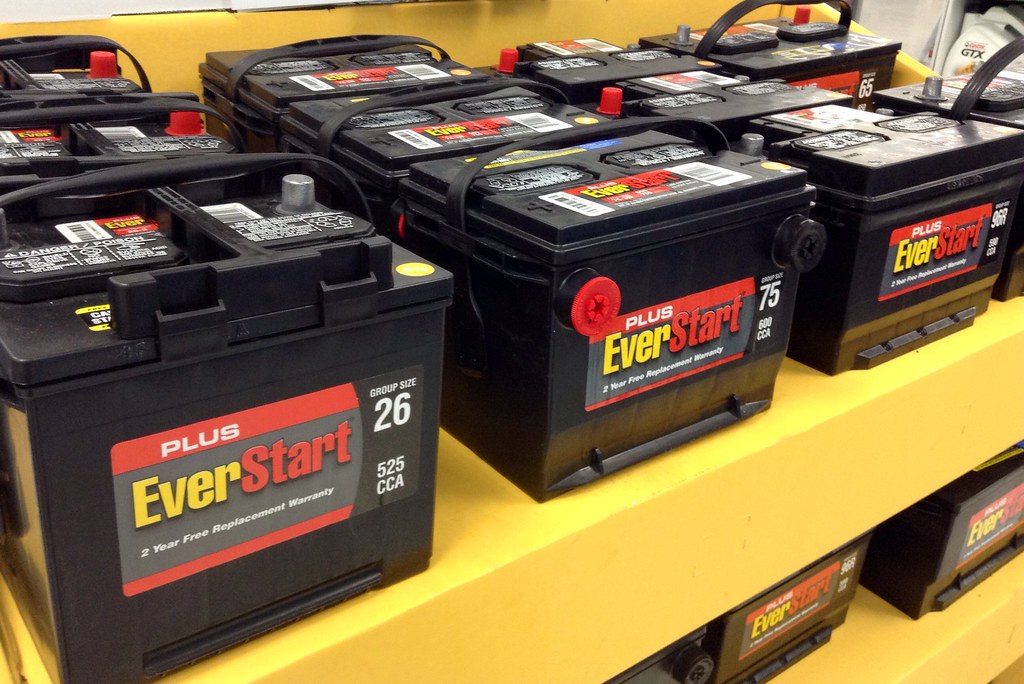As if making choices about cranking and deep-cycle batteries doesn’t make things difficult enough, batteries can be further described according to the configuration of the electrolyte inside the battery. This leads us to four categories of boat batteries that all have their own advantages and disadvantages. And while it does involve a bit of chemistry, it’s really not difficult to understand.
This page may contain affiliate links, which means I may earn a commission if you click through and make a purchase. Read our Affiliate Disclosure.
Getting the right battery for the intended task is only part of the story – keeping that battery healthy with the proper charging and maintenance will ultimately ensure that you will have the necessary power when you call for it! Which type of battery you choose is based on your needs (e.g., deep cycle vs. starting), the capacity and lifespan you are looking for, and your budget requirements. So, let’s jump right in!
Wet-Cell or Flooded-Cell Batteries
Generally, the most popular battery and the type most all of us are familiar with, are wet- or flooded-cell batteries. They have several cells inside them that contain a liquid mixture of sulfuric acid and distilled water. They have the advantages of a somewhat lower price, a high number of discharge/recharge cycles (if properly maintained and taken care of), are less likely to be damaged by overcharging and are a bit lighter in weight than comparable AGM or Gel batteries.
The disadvantages are that most have vented, interior-accessible designs, requiring regular inspection. It is up to the owners to make certain the cells are regularly topped off with distilled water. Venting also releases hydrogen gas, meaning the battery compartment must be well ventilated to avoid risk of explosion. Other drawbacks include possible spilling of corrosive battery acid, and a higher rate of self-discharge (6% to 7% per month). Be aware of the fact that wet-cell batteries are more fragile in high-vibration environments (such as boats!).
AGM Batteries
AGM is short for Absorbed Glass Mat, and these batteries feature a dense filling of very fine absorbent fiberglass matting that is saturated with acid/electrolyte and packed tightly between the battery’s plates. The design allows oxygen to recombine with hydrogen gas, thus replenishing the battery’s water content and alleviating the need for refilling. Advantages include being truly maintenance free (except for external cleaning).
They are sealed (which doesn’t allow for gases or acid to leak), can be installed at any angle, and are shock and vibration resistant. They also have a relatively low self-discharge rate (about 3% per month) and can even withstand being immersed in water (I guess that’s in the event your boat gets swamped?).
The biggest disadvantages are that AGM batteries are more expensive, are heavier and are quite sensitive to charging currents and voltages, The result is they are somewhat easy to overcharge, which can ultimately ruin the battery.
Gel Batteries
Gel batteries too, are much like wet-cell batteries in that they are filled with liquid electrolyte. The difference is that the electrolyte is gelled with silicates before the battery is sealed. Like AGM batteries, they use the special technology that eliminates the need for adding water. Advantages? They are maintenance free, sealed, low-temperature tolerant, shock/vibration resistant and have long cycle life. Their most notable advantage is resistance to over-discharge that can damage other battery types.
Gels have an internal self-discharge rate of less than 1 percent per month, so they can be stored for long periods without being recharged. And because they aren’t prone to develop life-shortening plate sulfation when left uncharged, they are a good choice for boaters who often forget to recharge batteries promptly after use. The bad news is that these batteries are often almost twice as expensive as comparable flooded-cell batteries and are also fickle about charging. They require their own special kind of chargers.
Lithium Batteries
Lithium-ion batteries are among the emerging “super battery” technologies. They have a high energy density and are excellent for deep cycle applications. Compared to flooded batteries, lithium batteries deliver savings of up to 70 percent in volume and weight and can offer three times as many charging cycles. They handle incredible amounts of current and therefore can be recharged faster than any other type. Currently in use onboard high-performance offshore racing sailboats and others whose owners demand extreme weight savings and cutting-edge performance, Lithium-ion may be the future… Or maybe not (see the next paragraph). But be prepared and willing to pay premium prices.
Worthy of note, there is a relatively “new kid” on the block in the Lithium category. It is a Lithium Iron Phosphate or: LiFePO4 battery. It has numerous advantages over lithium-ion technologies. In short, it’s much lighter, will tolerate a higher depth of discharge, recharges faster, and will operate at a wider temperature range. However, it is a very expensive option, and it is imperative that you have a “BMS” (battery management system) for your LiFePO4 batteries. But I’ll let you do your own research on this one.
For additional knowledge of batteries, see the other Boat Battery articles.








